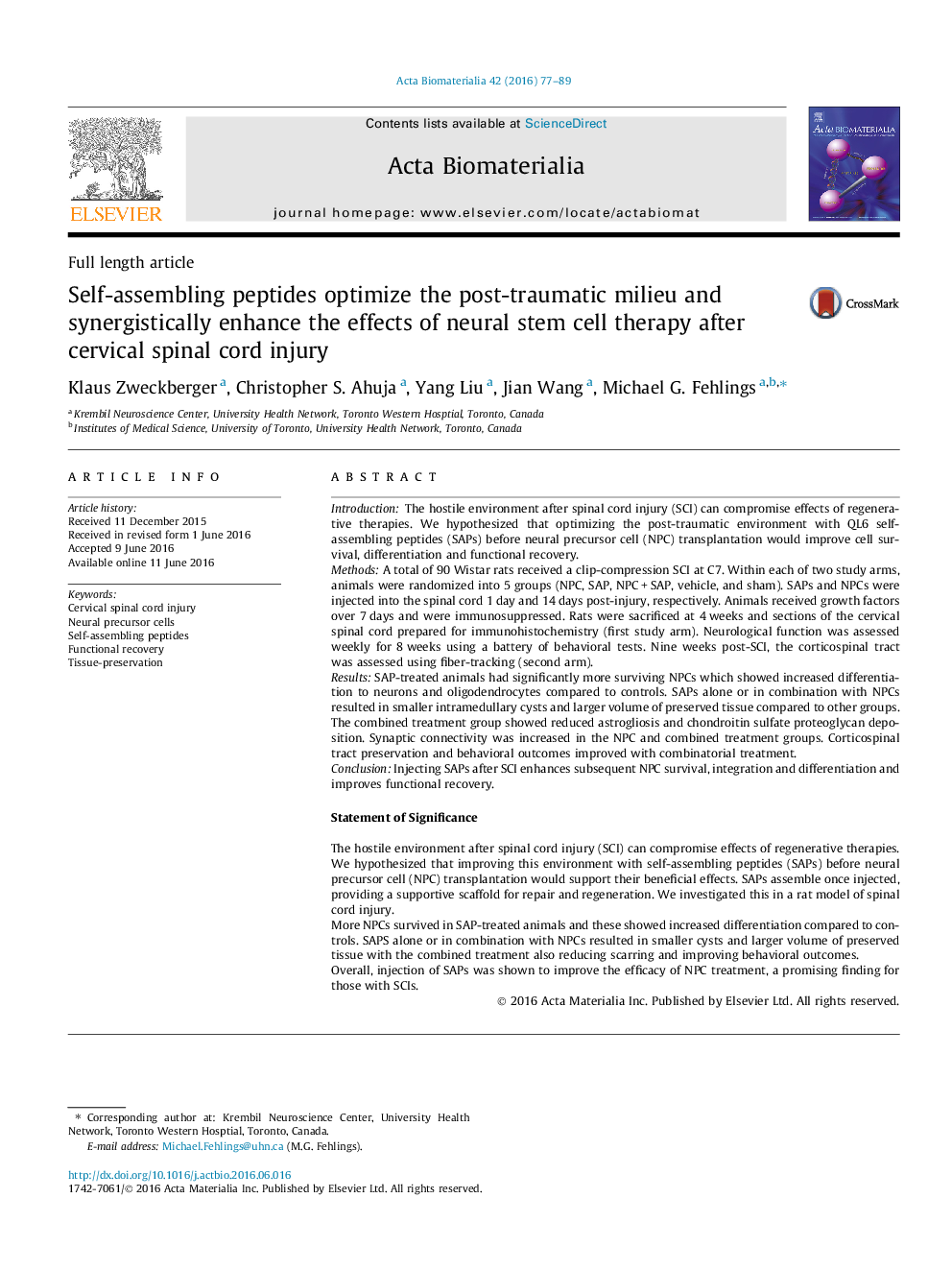| کد مقاله | کد نشریه | سال انتشار | مقاله انگلیسی | نسخه تمام متن |
|---|---|---|---|---|
| 6450193 | 1415944 | 2016 | 13 صفحه PDF | دانلود رایگان |
IntroductionThe hostile environment after spinal cord injury (SCI) can compromise effects of regenerative therapies. We hypothesized that optimizing the post-traumatic environment with QL6 self-assembling peptides (SAPs) before neural precursor cell (NPC) transplantation would improve cell survival, differentiation and functional recovery.MethodsA total of 90 Wistar rats received a clip-compression SCI at C7. Within each of two study arms, animals were randomized into 5 groups (NPC, SAP, NPCÂ +Â SAP, vehicle, and sham). SAPs and NPCs were injected into the spinal cord 1Â day and 14Â days post-injury, respectively. Animals received growth factors over 7Â days and were immunosuppressed. Rats were sacrificed at 4Â weeks and sections of the cervical spinal cord prepared for immunohistochemistry (first study arm). Neurological function was assessed weekly for 8Â weeks using a battery of behavioral tests. Nine weeks post-SCI, the corticospinal tract was assessed using fiber-tracking (second arm).ResultsSAP-treated animals had significantly more surviving NPCs which showed increased differentiation to neurons and oligodendrocytes compared to controls. SAPs alone or in combination with NPCs resulted in smaller intramedullary cysts and larger volume of preserved tissue compared to other groups. The combined treatment group showed reduced astrogliosis and chondroitin sulfate proteoglycan deposition. Synaptic connectivity was increased in the NPC and combined treatment groups. Corticospinal tract preservation and behavioral outcomes improved with combinatorial treatment.ConclusionInjecting SAPs after SCI enhances subsequent NPC survival, integration and differentiation and improves functional recovery.Statement of SignificanceThe hostile environment after spinal cord injury (SCI) can compromise effects of regenerative therapies. We hypothesized that improving this environment with self-assembling peptides (SAPs) before neural precursor cell (NPC) transplantation would support their beneficial effects. SAPs assemble once injected, providing a supportive scaffold for repair and regeneration. We investigated this in a rat model of spinal cord injury.More NPCs survived in SAP-treated animals and these showed increased differentiation compared to controls. SAPS alone or in combination with NPCs resulted in smaller cysts and larger volume of preserved tissue with the combined treatment also reducing scarring and improving behavioral outcomes.Overall, injection of SAPs was shown to improve the efficacy of NPC treatment, a promising finding for those with SCIs.
105
Journal: Acta Biomaterialia - Volume 42, 15 September 2016, Pages 77-89
